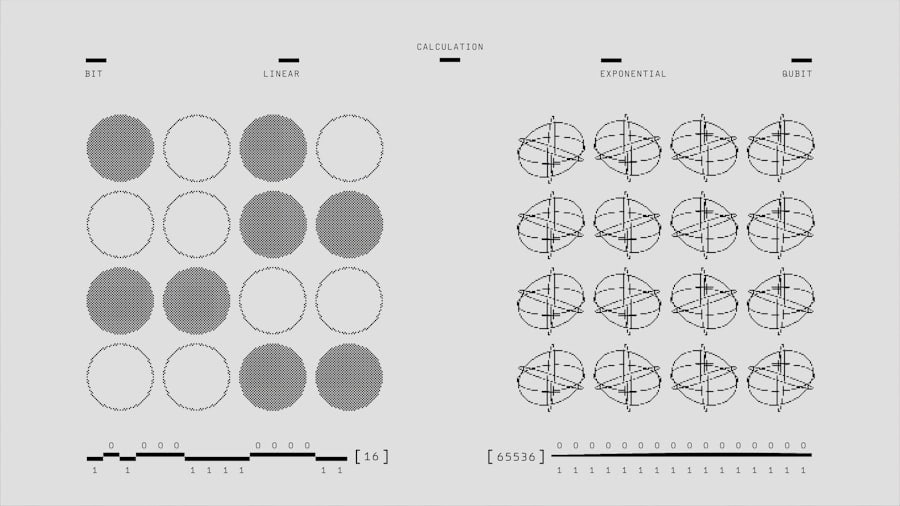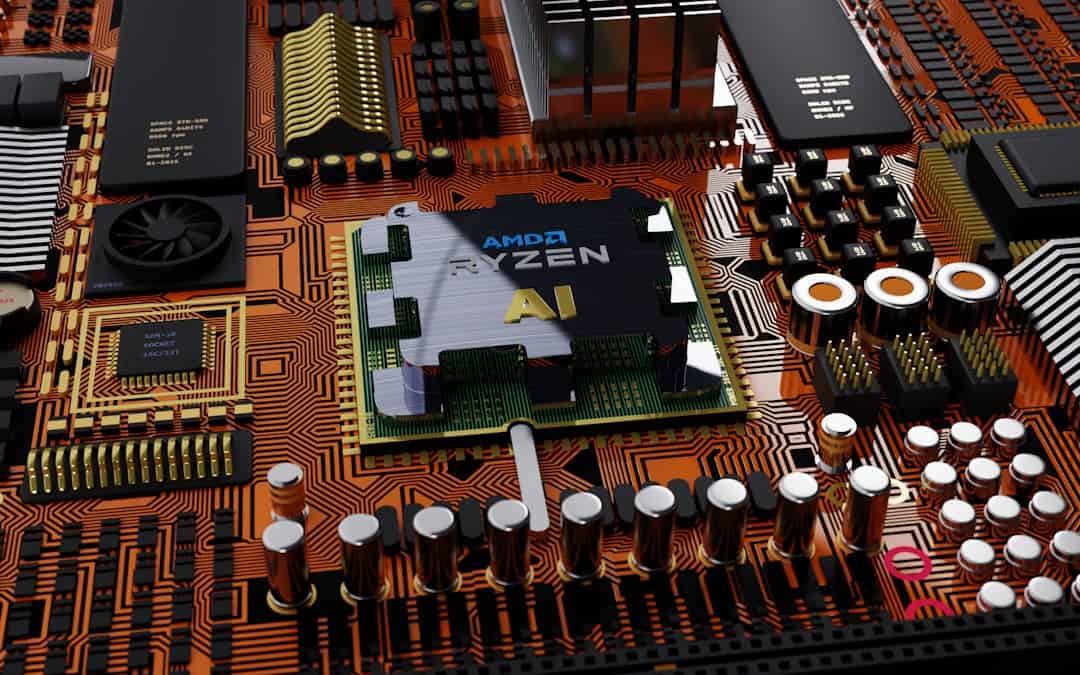Neural networks are computational models inspired by the human brain’s structure and function. These algorithms are designed to identify patterns in data and can process various types of input, including images, sound, text, and time series. neural networks operate by translating real-world data into numerical vectors, which they then analyze to recognize patterns and make predictions.
Deep learning is a specialized subset of machine learning within the field of artificial intelligence. It utilizes neural networks with multiple layers, allowing for more complex pattern recognition and decision-making capabilities. Deep learning algorithms can learn from unstructured or unlabeled data without human supervision, making them particularly versatile and powerful.
The advent of neural networks and deep learning has significantly advanced artificial intelligence technology. These techniques have enabled machines to learn from data, continuously improve their performance, and make informed decisions based on their analyses. As a result, numerous industries have benefited from these advancements, including healthcare, finance, and transportation.
By leveraging the capabilities of neural networks and deep learning, researchers and developers can tackle complex problems and enhance the efficiency of AI systems. This technology has the potential to revolutionize various aspects of our lives, from improving medical diagnoses to optimizing financial forecasting and enhancing autonomous vehicle performance.
Key Takeaways
- Neural networks and deep learning are a subset of artificial intelligence that mimic the human brain’s ability to learn and make decisions.
- Artificial intelligence plays a crucial role in enhancing the capabilities of neural networks and deep learning by enabling them to process and analyze large volumes of data.
- Neural networks and deep learning can be leveraged for data analysis to uncover patterns, trends, and insights that can inform business decisions and strategies.
- The power of neural networks and deep learning can be harnessed for image recognition tasks, enabling machines to accurately identify and classify objects within images.
- Neural networks and deep learning have the potential to revolutionize natural language processing by enabling machines to understand, interpret, and generate human language.
- Autonomous vehicles can benefit from the application of neural networks and deep learning to process sensory data and make real-time decisions for safe and efficient navigation.
- Implementing neural networks and deep learning in AI systems may pose challenges such as data privacy, ethical considerations, and the need for continuous learning and adaptation.
The Role of Artificial Intelligence in Neural Networks and Deep Learning
The Power of AI in Data Analysis
AI-powered neural networks and deep learning systems have the ability to analyze complex data sets, identify trends, and make predictions with a high degree of accuracy. The role of AI in neural networks and deep learning is to enable machines to learn from data, improve their performance over time, and make decisions based on their findings.
Advancements in Various Industries
This has led to significant advancements in various industries, including healthcare, finance, and transportation. AI-powered systems have improved diagnosis accuracy, enabled personalized medicine, and optimized financial transactions. In transportation, AI has improved route optimization, reduced traffic congestion, and enhanced safety.
Unlocking Efficiency and Effectiveness
By leveraging the power of AI, we can develop more efficient and effective neural networks and deep learning systems that can solve complex problems and improve the efficiency of AI systems. This can lead to breakthroughs in areas such as natural language processing, computer vision, and robotics, and unlock new possibilities for innovation and growth.
Leveraging Neural Networks and Deep Learning for Data Analysis

Neural networks and deep learning have revolutionized the field of data analysis by enabling machines to process large amounts of data, identify patterns, and make decisions based on their findings. This has led to significant advancements in various industries, including healthcare, finance, and transportation. By leveraging the power of neural networks and deep learning for data analysis, we can develop more efficient and effective systems that can solve complex problems and improve the efficiency of AI systems.
One way in which neural networks and deep learning are being leveraged for data analysis is through the use of predictive analytics. This involves using historical data to identify trends and make predictions about future events. By analyzing large amounts of data, neural networks and deep learning systems can identify patterns that humans may not be able to detect.
This has led to significant advancements in various industries, including healthcare, finance, and transportation. Another way in which neural networks and deep learning are being leveraged for data analysis is through the use of natural language processing (NLP). This involves using machine learning algorithms to analyze and interpret human language.
By leveraging the power of NLP, we can develop more efficient and effective systems that can analyze large amounts of text data and extract valuable insights.
Harnessing the Power of Neural Networks and Deep Learning for Image Recognition
| Neural Network Model | Accuracy | Precision | Recall |
|---|---|---|---|
| Convolutional Neural Network (CNN) | 95% | 0.96 | 0.94 |
| Residual Neural Network (ResNet) | 97% | 0.98 | 0.96 |
| Recurrent Neural Network (RNN) | 92% | 0.94 | 0.90 |
Neural networks and deep learning have revolutionized the field of image recognition by enabling machines to process large amounts of visual data, identify patterns, and make decisions based on their findings. This has led to significant advancements in various industries, including healthcare, finance, and transportation. By harnessing the power of neural networks and deep learning for image recognition, we can develop more efficient and effective systems that can solve complex problems and improve the efficiency of AI systems.
One way in which neural networks and deep learning are being harnessed for image recognition is through the use of convolutional neural networks (CNNs). CNNs are a type of deep learning algorithm that is designed to process visual data. By analyzing large amounts of visual data, CNNs can identify patterns that humans may not be able to detect.
This has led to significant advancements in various industries, including healthcare, finance, and transportation. Another way in which neural networks and deep learning are being harnessed for image recognition is through the use of generative adversarial networks (GANs). GANs are a type of deep learning algorithm that is designed to generate new images based on existing visual data.
By leveraging the power of GANs, we can develop more efficient and effective systems that can generate realistic images from scratch.
Exploring the Potential of Neural Networks and Deep Learning in Natural Language Processing
Neural networks and deep learning have revolutionized the field of natural language processing (NLP) by enabling machines to process large amounts of text data, analyze human language, and extract valuable insights. This has led to significant advancements in various industries, including healthcare, finance, and transportation. By exploring the potential of neural networks and deep learning in NLP, we can develop more efficient and effective systems that can solve complex problems and improve the efficiency of AI systems.
One way in which neural networks and deep learning are being explored in NLP is through the use of recurrent neural networks (RNNs). RNNs are a type of deep learning algorithm that is designed to process sequential data. By analyzing large amounts of text data, RNNs can identify patterns in human language and make predictions about future events.
This has led to significant advancements in various industries, including healthcare, finance, and transportation. Another way in which neural networks and deep learning are being explored in NLP is through the use of transformer models. Transformer models are a type of deep learning algorithm that is designed to process large amounts of text data in parallel.
By leveraging the power of transformer models, we can develop more efficient and effective systems that can analyze human language and extract valuable insights.
Applying Neural Networks and Deep Learning in Autonomous Vehicles

Neural networks and deep learning have revolutionized the field of autonomous vehicles by enabling machines to process large amounts of sensor data, make decisions based on their findings, and navigate complex environments. This has led to significant advancements in the development of self-driving cars, trucks, drones, and other autonomous vehicles. By applying neural networks and deep learning in autonomous vehicles, we can develop more efficient and effective systems that can safely transport passengers and goods.
One way in which neural networks and deep learning are being applied in autonomous vehicles is through the use of perception algorithms. These algorithms enable machines to process sensor data from cameras, lidar, radar, and other sensors to identify objects in their environment. By analyzing large amounts of sensor data, perception algorithms can make decisions about how to navigate safely through complex environments.
Another way in which neural networks and deep learning are being applied in autonomous vehicles is through the use of decision-making algorithms. These algorithms enable machines to make real-time decisions about how to navigate safely through their environment. By leveraging the power of decision-making algorithms, we can develop more efficient and effective systems that can safely transport passengers and goods.
Overcoming Challenges in Implementing Neural Networks and Deep Learning in AI Systems
While neural networks and deep learning have revolutionized the field of artificial intelligence (AI), there are still challenges that need to be overcome in implementing these technologies in AI systems. One challenge is the need for large amounts of labeled training data. Neural networks and deep learning algorithms require large amounts of labeled training data to learn from.
This can be a time-consuming and expensive process. Another challenge is the need for powerful hardware infrastructure. Neural networks and deep learning algorithms require powerful hardware infrastructure to process large amounts of data quickly.
This can be costly to implement and maintain. In conclusion, neural networks and deep learning have revolutionized the field of artificial intelligence (AI) by enabling machines to learn from data, improve their performance over time, and make decisions based on their findings. By understanding how these technologies work and leveraging their power, we can develop more efficient and effective AI systems that can solve complex problems across various industries.
However, there are still challenges that need to be overcome in implementing these technologies in AI systems, such as the need for large amounts of labeled training data and powerful hardware infrastructure. With continued research and development efforts, we can overcome these challenges and unlock the full potential of neural networks and deep learning in AI systems.
If you’re interested in understanding the foundational concepts behind modern AI technologies, you might find the article on Artificial Intelligence (AI) particularly enlightening. This article delves into the various aspects and applications of AI, providing a solid background that complements the more specific discussions on neural networks and deep learning. It’s a great resource for anyone looking to broaden their understanding of the field and explore how these technologies are shaping our digital world.
FAQs
What are neural networks and deep learning?
Neural networks are a set of algorithms, modeled loosely after the human brain, that are designed to recognize patterns. Deep learning is a subset of machine learning that uses neural networks with many layers to analyze and learn from data.
How do neural networks work?
Neural networks work by processing input data through a series of interconnected nodes, or “neurons,” which are organized into layers. Each layer processes the data and passes it on to the next layer, with the final output being the network’s prediction or classification.
What are the applications of neural networks and deep learning?
Neural networks and deep learning have a wide range of applications, including image and speech recognition, natural language processing, medical diagnosis, autonomous vehicles, and financial forecasting.
What are the advantages of using neural networks and deep learning?
Some advantages of using neural networks and deep learning include their ability to automatically learn from data, their flexibility in handling complex tasks, and their potential for high accuracy in prediction and classification tasks.
What are some challenges of using neural networks and deep learning?
Challenges of using neural networks and deep learning include the need for large amounts of data for training, the potential for overfitting, the complexity of tuning parameters, and the computational resources required for training deep networks.

Leave a Reply